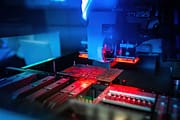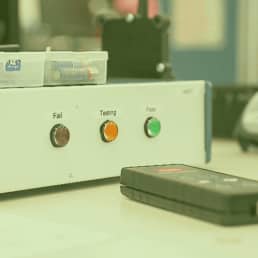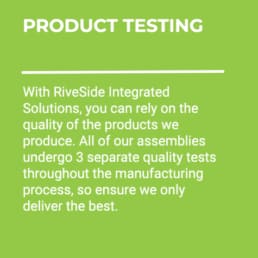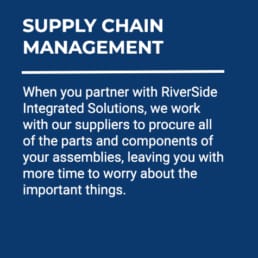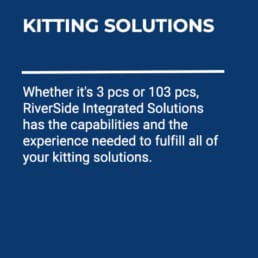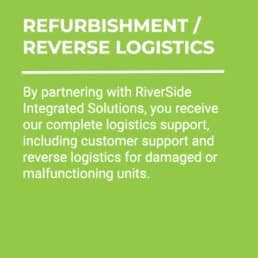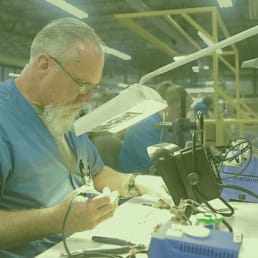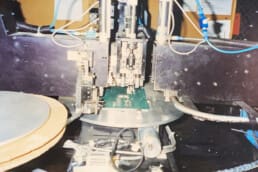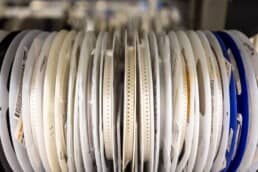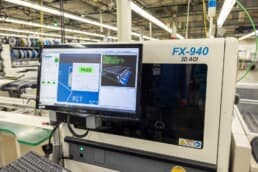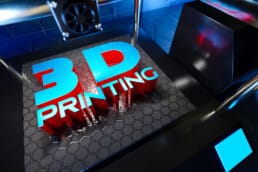A Deeper Dive into PCBA Testing
Comprehensive printed circuit board assembly (PCBA) testing is becoming more critical to the performance and functionality of circuit boards. This is especially true in sensitive and high-reliability industries such as medical, precision and industrial controls.
As these processes become complex, many original equipment manufacturers (OEMs) outsource part or all of their PCBA needs. Contract manufacturers like RiverSide Integrated Solutions (RIS) are knowledgeable in PCBA, testing and system integration.
We have the experience to assist customers with developing and executing a robust PCBA test program. Whether bringing a new product to market or trying to optimize an existing product, RIS is the right choice!
COMMON PCBA TESTING METHODS
Quality testing is an integral aspect of electronics manufacturing. There is always the potential for design issues, manufacturing defects or human error during fabrication and assembly. Testing is the checkpoint to catch these problems.
Testing is critical to the final product’s performance, functionality and reliability. It can identify and resolve quality issues before problems arise.
Some PCBs contain hundreds of components and thousands of solder connections. So, testing must be thorough and strategic to ensure a functional board. Various inspection and testing methods are available to ensure the quality of PCBs.
Below is a deeper dive into some key PCBA testing procedures.
IN-CIRCUIT TEST
This PCBA testing procedure is popular and provides a comprehensive test. The in-circuit test (ICT) is also known as the “bed of nails” test. The bed of nails is a set of electrical probes which send current through specified test points. This checks for defects, such as shorts and open circuits, misorientation of components and issues with the solder connections.
ICT is often designed for 100% defect coverage, resulting in around 85-95%.
However, ICT requires a specialized fixture with test points specific to each PCBA. Building or purchasing these fixtures adds incremental cost and time to the manufacturing process that is not profitable for many OEMs.
That’s why many choose to partner with RIS! Our customers get access to our test equipment, saving them time and money!
Since a fixture is required for each assembly, this testing method is a good fit for high-volume, “mature” designs. That is designs that do not expect significant revisions, as every redesign means redesigning the fixture as well.
FLYING PROBE
The flying probe test is a programmable software test. As suggested by the name, the test probes “fly” over test points on the board as directed. It tests for opens, shorts, resistance, capacitance, inductance and diode issues. This method can also measure voltage and check for diode and transistor orientations.
Flying probe does not require a custom fixture and, therefore, does not require tooling costs like the in-circuit test. However, the test takes longer, increasing the unit cost.
This method is typically a good choice for prototypes and small to medium volumes of PCBs. High volumes may take too long, especially if the boards are complex.
X-RAY INSPECTIONS
This PCBA testing procedure employs x-rays, as the name implies. It generates 2D or 3D images of the PCB solder joints. The software takes close-up, detailed images of a PCBA. Using this, a technician can identify defects in solder joints, connections, internal traces and barrels.
One of the main benefits of x-ray technology is that hidden parts of the PCB become “visible”. It reveals issues, such as solder voids, that may impact PCB functionality or integrity in the field.
This test method is usually most appropriate for prototypes or smaller volumes. This is because the process is often time-consuming and requires a trained technician.
RIS PCBA EXPERTISE
At RIS, PCB assembly is one of our core competencies. We provide reliable, seamlessly-assembled printed circuit board systems built with extreme precision.
Our skilled engineers, technicians and assemblers work to expertly put together a complete PCBA. When you choose RIS, you can expect the hands-on customer care of a small operation with the capabilities characteristic of a larger company. We provide our complete electronics manufacturing services for OEMs in any industry.
Our electronics assembly expertise includes:
- Surface Mount Technology (Fine-pitch, BGA (1 mm), µBGA (.4 mm), 01005, X-Ray, automated rework, and automated optical inspection (AOI)
- Magazine to Magazine handling
- Smart Shelving floor stock inventory control
- X-ray reel counting
- Lead-through auto-insertion (Axial, Radial, DIP, and Zierick Terminals)
- Wave Solder and Selective Solder Machines (No-clean & aqueous flux processes) RoHS and Tin/Lead capabilities
- Special Application Equipment (Cobot dispensing systems)
- Conformal coating (Silicone, Urethane)
- Potting (Epoxy, Urethane, and Silicone)
- Low-pressure molding technology
- Comprehensive product testing
- 3D Printing
About RiverSide Integrated Solutions
RIS is an advanced contract manufacturer providing robust solutions in circuit board assembly and product assembly. We employ more than 350 people and provide services to OEMs worldwide. We operate two state-of-the-art manufacturing facilities within the US.
With all of the choices in contract manufacturers out there, we know it can be challenging to find someone who understands your business model and has your best intentions in mind. RIS has always proven to be a win-win-focused relationship.
As your one-stop shop, we have the capabilities, capacity, quality assurance standards and resources to support all of your manufacturing needs. We understand that supply chain management is complex and very time-consuming, so we urge our customers to utilize us in the fullest capacity.
Our total-package solutions include:
- Extensive supply-chain network
- Full box-build assembly
- Dedicated Program Team
- Warehousing, kitting and drop-shipping capabilities
- Reverse logistics
- Flexible order fulfillment
- Scalability to meet your needs
Contact us today at (507) 523-3220 to see how we can help with your manufacturing project, or click contact us for a quote.
